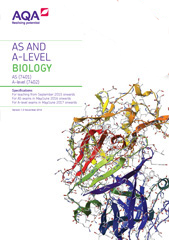3.3 Organisms exchange substances with their environment
The internal environment of a cell or organism is different from its external environment. The exchange of substances between the internal and external environments takes place at exchange surfaces. To truly enter or leave an organism, most substances must cross cell plasma membranes.
In large multicellular organisms, the immediate environment of cells is some form of tissue fluid. Most cells are too far away from exchange surfaces, and from each other, for simple diffusion alone to maintain the composition of tissue fluid within a suitable metabolic range. In large organisms, exchange surfaces are associated with mass transport systems that carry substances between the exchange surfaces and the rest of the body and between parts of the body. Mass transport maintains the final diffusion gradients that bring substances to and from the cell membranes of individual cells. It also helps to maintain the relatively stable environment that is tissue fluid.
Surface area to volume ratio
Content |
Opportunities for skills development |
|---|---|
|
The relationship between the size of an organism or structure and its surface area to volume ratio. Changes to body shape and the development of systems in larger organisms as adaptations that facilitate exchange as this ratio reduces. Students should be able to appreciate the relationship between surface area to volume ratio and metabolic rate. |
PS 1.1 Students could use agar blocks containing indicator to determine the effect of surface area to volume ratio and concentration gradient on the diffusion of an acid or alkali. MS 4.1 Students could be given the dimensions of cells with different shapes from which to calculate the surface area to volume ratios of these cells. |
Gas exchange
Content |
Opportunities for skills development |
|---|---|
Adaptations of gas exchange surfaces, shown by gas exchange:
Structural and functional compromises between the opposing needs for efficient gas exchange and the limitation of water loss shown by terrestrial insects and xerophytic plants. The gross structure of the human gas exchange system limited to the alveoli, bronchioles, bronchi, trachea and lungs. The essential features of the alveolar epithelium as a surface over which gas exchange takes place. Ventilation and the exchange of gases in the lungs. The mechanism of breathing to include the role of the diaphragm and the antagonistic interaction between the external and internal intercostal muscles in bringing about pressure changes in the thoracic cavity. Students should be able to:
|
AT j Students could dissect mammalian lungs, the gas exchange system of a bony fish or of an insect. AT d Students could use an optical microscope to:
AT b Students could use three-way taps, manometers and simple respirometers to measure volumes of air involved in gas exchange.MS 2.2 Students could be given values of pulmonary ventilation rate (PVR) and one other measure, requiring them to change the subject of the equation:
|
Digestion and absorption
Content |
Opportunities for skills development |
|---|---|
During digestion, large biological molecules are hydrolysed to smaller molecules that can be absorbed across cell membranes. Digestion in mammals of:
Mechanisms for the absorption of the products of digestion by cells lining the ileum of mammals, to include:
|
PS 1.1 Students could:
|
Mass transport
Over large distances, efficient movement of substance to and from exchange surfaces is provided by mass transport.
Mass transport in animals
| Content | Opportunities for skills development |
|---|---|
|
The haemoglobins are a group of chemically similar molecules found in many different organisms. Haemoglobin is a protein with a quaternary structure. The role of haemoglobin and red blood cells in the transport of oxygen. The loading, transport and unloading of oxygen in relation to the oxyhaemoglobin dissociation curve. The cooperative nature of oxygen binding to show that the change in shape of haemoglobin caused by binding of the first oxygens makes the binding of further oxygens easier. The effects of carbon dioxide concentration on the dissociation of oxyhaemoglobin (the Bohr effect). Many animals are adapted to their environment by possessing different types of haemoglobin with different oxygen transport properties. The general pattern of blood circulation in a mammal. Names are required only of the coronary arteries and of the blood vessels entering and leaving the heart, lungs and kidneys. The gross structure of the human heart. Pressure and volume changes and associated valve movements during the cardiac cycle that maintain a unidirectional flow of blood. The structure of arteries, arterioles and veins in relation to their function. The structure of capillaries and the importance of capillary beds as exchange surfaces. The formation of tissue fluid and its return to the circulatory system. Students should be able to:
|
AT h Students could design and carry out an investigation into the effect of a named variable on human pulse rate or on the heart rate of an invertebrate, such as Daphnia. MS 2.2 Students could be given values of cardiac output (CO) and one other measure, requiring them to change the subject of the equation:
|
|
Required practical 5: Dissection of animal or plant gas exchange system or mass transport system or of organ within such a system. |
AT j |
Mass transport in plants
| Content | Opportunities for skills development |
|---|---|
|
Xylem as the tissue that transports water in the stem and leaves of plants. The cohesion-tension theory of water transport in the xylem. Phloem as the tissue that transports organic substances in plants. The mass flow hypothesis for the mechanism of translocation in plants. The use of tracers and ringing experiments to investigate transport in plants. Students should be able to:
|
AT b Students could set up and use a potometer to investigate the effect of a named environmental variable on the rate of transpiration. |
